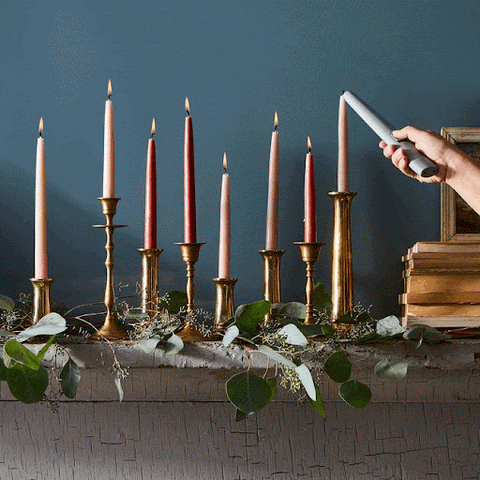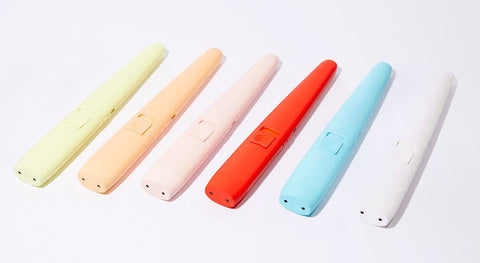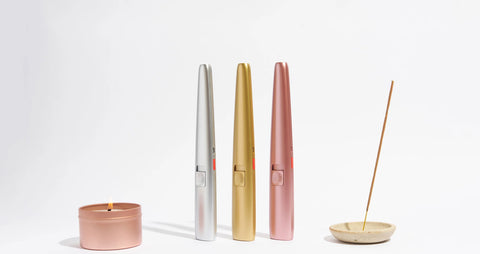
If you've ever been curious about at what temperature lighters burn, this blog post is for you! The burning temperatures of lighters can be an interesting topic to explore. In this post, we will discuss the science behind lighter burning temperatures and their potential practical applications.
How Do Lighters Work?
Electric Lighters
Electric lighters use electricity to heat a metal coil, which then creates enough heat energy to ignite something flammable like paper or wood. The electricity comes from a battery inside the lighter, which is activated by pressing the button or sliding the switch into on position. This triggers an electrical current that flows through a circuit to a transformer, which increases the voltage from 3 volts to 4,000 volts. This jolt of electricity passes through the metal coil, creating enough heat for it to glow red hot in just 0.2 seconds. That's lightning fast!
Butane Lighters
Butane lighters also produce heat energy to ignite something flammable. But instead of using electricity as electric lighters do, butane lighters use pressurized gas stored inside their case. When you press down on the button, it releases some of this gas into a chamber where it is heated up and ignited with a spark created by two electrodes. This spark then ignites the gas into flames that come out of the nozzle at the end of the lighter.

What Temperatures Do Lighters Burn At?
Plasma lighters burn at temperatures of up to 1,100 degrees Fahrenheit (2,204 Celsius). Butane lighters are slightly cooler and burn at temperatures of up to 4,074 degrees Fahrenheit (2245 Celsius). Both electric and butane lighters can create an impressive amount of heat energy in a short amount of time.
What Are The Practical Uses For Lighters?
Fire Starting Tool
One of the most common uses for lighters today is as a fire-starting tool. Lighters are great for starting fires in campfires or outdoor fire pits because they can generate sparks quickly and easily. You can also use them to light charcoal grills or barbecues for outdoor fun. This makes them a handy tool to take with you on camping trips or backpacking to help you start a fire quickly.
Sealing Envelopes & Bags
Another practical use for lighters is to seal envelopes and bags shut. If you’re sending something delicate, like a fragile item or documents that need to remain sealed, you can use your lighter to melt the edges to secure them together. This will ensure that your items stay secure in transit and won’t get damaged due to shifting during shipping. It’s also an easy way to keep food fresh in plastic bags when you don’t want air getting inside and spoiling the contents.
Lighting Candles & Fireplaces
Lighters are also great tools for lighting candles or fireplaces. Using a lighter minimizes the risk of burning yourself on hot wax and it will not produce lots of smoke which commonly happens when using matches or tinderboxes. Plus, if you have candles in a small jar, a lighter with a long handle such as the Candle Lighter by the USB Lighter Company can easily reach the wick.
What To Consider When Choosing A Lighter For Different Purposes
Durability
One of the most important factors to consider when choosing a lighter is its durability. This means looking at how well the lighter is built and how long it will last with regular use. Disposable lighters are typically not very durable and must be replaced frequently. More quality-made lighters, like the Motli Light by the USB Lighter Company, can withstand wear and tear better over time.
Flame Type
Flame Type Another important factor to consider is the flame type. There are three main types of flames—soft (or “lazy”) flames, hot (or “torch”) flames and an electric arc (or a flameless flame). Soft flames are best suited for lighting candles while hot flames provide a more intense heat that is better suited for tasks such as soldering or welding. Electric arcs can be used to light all types of flammable materials including candles, fire logs and gas appliances.
Fuel/Power Source
It’s also important to consider the lighter’s fuel or power source. Most disposable lighters use butane as their fuel source, while more advanced multi-purpose lighters often offer the option of using propane or even gasoline. This means you’ll have to purchase fuel and refill your lighter regularly which can be messy and inconvenient. Using a fuel source such as butane can also be harmful to the environment.
USB rechargeable or electric lighters do not need fuel. Instead, when they are out of charge, you just need to plug them up. The charging time is only 1.5 hours which is quick. This makes the electric lighter more convenient and eco-friendly.
Cost
Finally, it’s worth considering how much you are willing to spend on a lighter. Disposable lighters are quite inexpensive but you will have to buy many of them in a lifetime. Butane lighters are more expensive than disposable lighters and require costly fuel to operate. Electric lighters, however, are very affordable and will last you for many decades. By buying an electric lighter, you’ll save lots of money in the long run.
Safety Tips
- Always follow the manufacturer's instructions when using a lighter.
- Make sure to store your lighters safely away from children and pets.
- Never leave lit lighters unattended.
- Keep flammable materials away from an open flame.
- Never use a lighter to light something you cannot control.
Conclusion
Lighters are an incredibly useful tool that can be used for a variety of tasks from lighting birthday candles to getting a flame started for a roaring campfire. By understanding the science behind how they work and considering factors like flame type, durability, and cost when making your selection, you'll be able to choose the right lighter for you. USB rechargeable lighters are great for anyone. They are versatile and reliable and can be used for a variety of both indoor and outdoor tasks. You can purchase a small, compact pocket lighter to carry in your purse such as the Pocket Lighter-Season 2 by the USB Lighter Company, or one to keep at home such the candle lighter by the USB Lighter Company to light your candles or fireplace.





